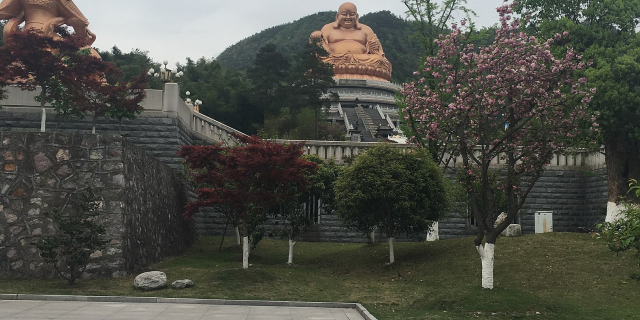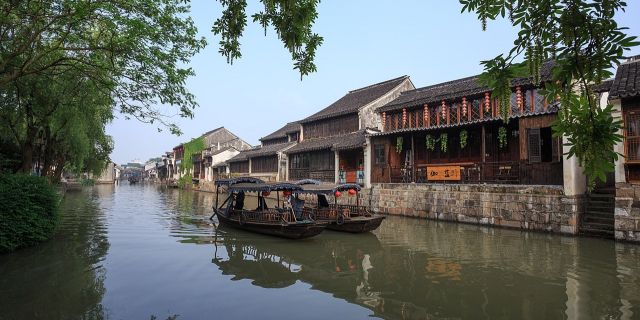Mount Putuo (Chinese: 普陀山; pinyin: Pǔtuó Shān, from Sanskrit: "Mount Potalaka") is an island in Putuo District, Zhoushan, Zhejiang, China. It is a renowned site in Chinese Buddhism and is the bodhimaṇḍa of the bodhisattva Guanyin.
Mount Putuo is one of the four sacred mountains in Chinese Buddhism, the others being Mount Wutai, Mount Jiuhua, and Mount Emei (bodhimaṇḍas for Manjushri, Kṣitigarbha, and Samantabhadra, respectively).
Mount Putuo lies in the East China Sea and incorporates the beauty of both mountain and sea. Mountain Putuo is at 29°58′3~30°02′3 north latitude, 122°21′6~122°24′9 east longitude. Its area is approximately 12.5 square kilometres (4.8 sq mi) and there are numerous famous temples. Every year on the 19th day of the 2nd lunar month, 19th day of the 6th lunar month, and 19th day of the 9th lunar month of the Chinese calendar, it welcomes millions of people for the celebration of the bi...Read more
Mount Putuo (Chinese: 普陀山; pinyin: Pǔtuó Shān, from Sanskrit: "Mount Potalaka") is an island in Putuo District, Zhoushan, Zhejiang, China. It is a renowned site in Chinese Buddhism and is the bodhimaṇḍa of the bodhisattva Guanyin.
Mount Putuo is one of the four sacred mountains in Chinese Buddhism, the others being Mount Wutai, Mount Jiuhua, and Mount Emei (bodhimaṇḍas for Manjushri, Kṣitigarbha, and Samantabhadra, respectively).
Mount Putuo lies in the East China Sea and incorporates the beauty of both mountain and sea. Mountain Putuo is at 29°58′3~30°02′3 north latitude, 122°21′6~122°24′9 east longitude. Its area is approximately 12.5 square kilometres (4.8 sq mi) and there are numerous famous temples. Every year on the 19th day of the 2nd lunar month, 19th day of the 6th lunar month, and 19th day of the 9th lunar month of the Chinese calendar, it welcomes millions of people for the celebration of the birth of Guanyin.
Mount Putuo has been a pilgrimage site for over a thousand years.[1][2] After the Tang dynasty, Mount Putuo became a center of Guanyin worship.[3] Traditionally there were three main temples: the Puji Temple (普濟寺, founded in 10th century), the Fayu Temple (法雨寺, founded 1580 CE), and the Huiji Temple (慧濟寺, founded 1793 CE). The site has received numerous renowned visitors over the ages, including the then 20-year-old future Chan master Yinyuan Longqi (Japanese: Ingen), who came to the site in 1612, while looking for his father, who had disappeared fifteen years earlier.
Taixu spent several years in solitary retreat at a small hermitage on Putuo.

































Add new comment